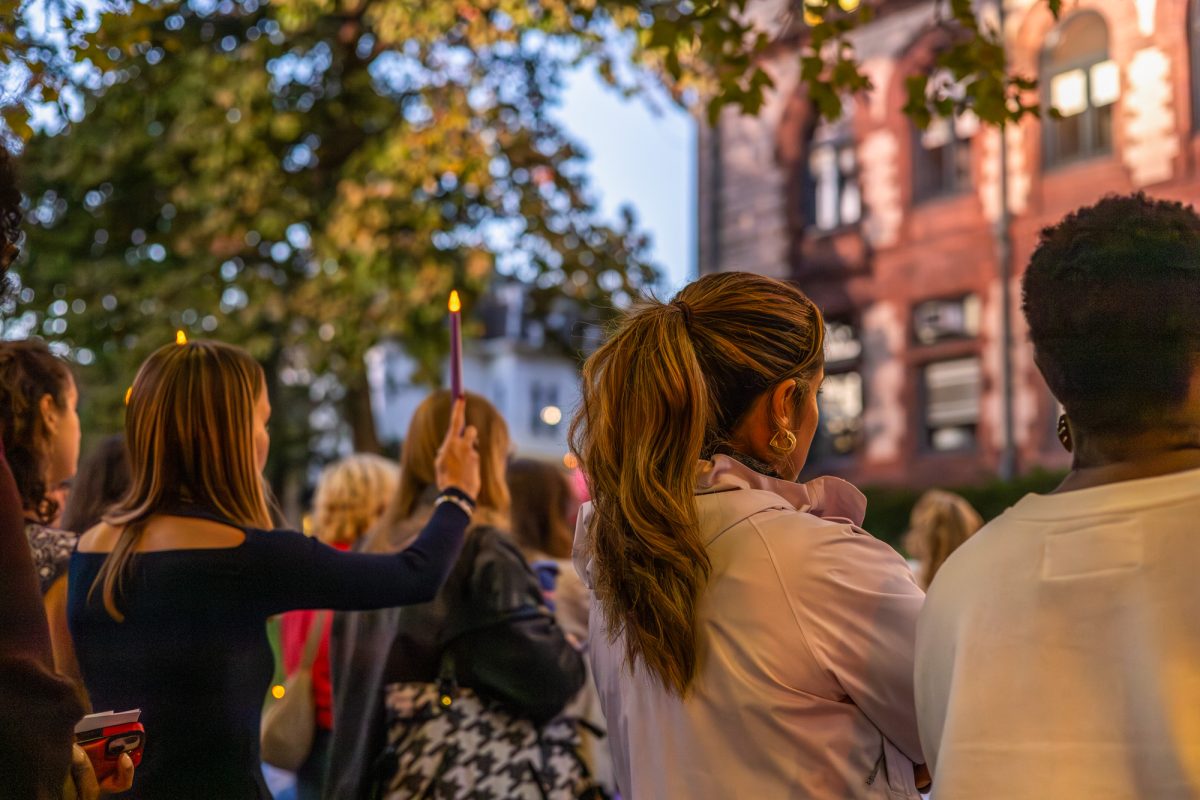The Princeton Review released survey results on April 20 that includes Boston University in a list of hundreds of colleges across the United States that have successfully gone green.
The ranking comes after the university’s massive environmental push in recent years, a movement that has included launching a new environmental website, instituting green construction programs across campus and a launching a drive to nudge students towards sustainability.
“The Princeton Review’s Guide to 286 Green Colleges” looked at campus quality of life, how well the school prepares students for employment in a green economy and how environmentally friendly the school’s behavior and facilities are, said Kristin Simmons, a spokeswoman for the U.S. Green Building Council, which partnered with the Princeton Review for the guide.
“Before this, there weren’t a lot of ways to assess how green a college campus was,” Simmons said. Instead of asking schools themselves, she said, students can now look at the Princeton Review guide, available free online, as “a respected third-party source.”
The Princeton Review began the guide this year after a survey of over 10,000 high school students and parents found that 66 percent said environmental sustainability was important to them when looking at institutions of higher education.
Because of this result, Simmons said, the Princeton Review sent administrators a survey about their school’s environmental practices, which asked whether there was a green building policy on campus, career guidance on green jobs or a sustainability office on campus, for example.
They then used the survey information to score each respondent on a scale from 60 to 99. Those who scored 80 and up were included in the guide. BU received an 88.
The score was based partially on BU’s recent investment in improving the energy efficiency of its buildings through retrofitted features, a large number of environmental clubs and activities on campus and its efforts toward encouraging recycling, according to the guide.
Additionally, 25 percent of BU’s food budget is spent on local or organic food, 10 percent of the school’s energy is from renewable resources and 75 percent of the school’s cleaning products are certified green, according to the guide.
Some neighboring schools faired better than BU &- neighbors Harvard University and Northeastern University both scored a perfect 99.
BU aims to keep a balance between its people, the planet, its prosperity and education, said Dennis Carlberg, the sustainability director at the facilities management and planning department.
“If we go broke doing this, we’re not very sustainable,” he said.
This past year marked the beginning of the sustainability@BU program, and with it came a number of initiatives, both for updating the school’s facilities and organizing students, staff and faculty around environmental causes, Carlberg said.
This includes the launch of the sustainability@BU website, which was recently selected as an honoree in the Webby Awards. The site makes an effort to unite environmental groups on campus, with monthly challenges for the BU community to change their habits.
This month, for example, BU is partnering with Goodwill in the hopes that students will give end-of-the-year cast-offs to the nonprofit consignment store.
The year also had its disappointments for sustainability@BU. The print quota cuts attracted some controversy, charging students for paper after they had printed 100 pages each semester.
“I think the print quota could have been communicated better, [but] I think it’s been effective at reducing our waste,” Carlberg said.
Also, BU’s partnership with Carbonrally, a website on which BU schools compete to save the most amount of carbon from being released to the atmosphere, attracted too low a number of students, Carlberg said.
“I’d feel great if we added a zero [to the end of] our Carbonrally number,” Carlberg said.
724 people affiliated with BU are signed up for the program, he said.
The group’s goal for next year is to think of ways to engage students and encourage more action in Carbonrally and other areas, said Carolyn Clark, associate professor of communication and co-chair of the communications and outreach working group for BU’s sustainability efforts.
Over the summer, several changes will go into effect to make BU more sustainable, Carlberg said.
Some of these changes include putting a broader recycling program in place, renovating a brownstone and completing BU’s transition from using heating oil to using natural gas in its central plant.
The transition to heating oil would reduce BU’s carbon footprint and cost less than oil. The central plant provides about 25 percent of the heating and cooling on the Charles River Campus, Carlberg said.
Simmons said colleges are an ideal place for sustainable actions to take place.
Because schools own and operate their own buildings, they can pay the upfront cost for renovations knowing that many green projects pay for themselves with time, she said.
“We often will talk about how they are the living laboratories of sustainability . . . they sort of create their own ecosystem, with all the things the rest of the world has but in a sustained environment,” Simmons said. “They are natural thought leaders in terms of what will come next.”
“Students are leading the sustainability movement,” she added, “so often times movements to green the campus come from the bottom up.”


















































































































